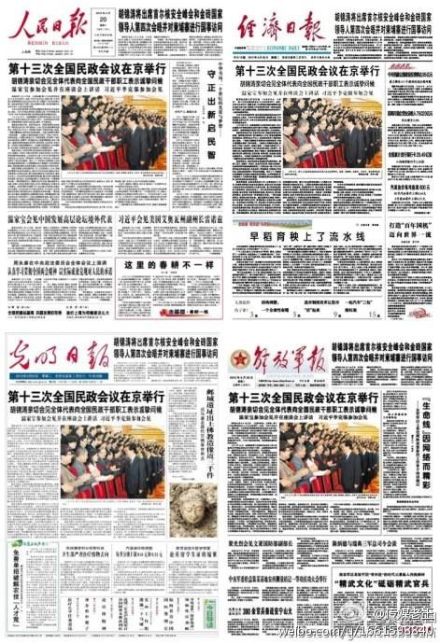As we’ve pointed out again and again at the China Media Project, one of the most interesting contrasts that can readily be seen in China’s media is between news treatment by Party-run newspapers and market-oriented newspapers.
In the vast majority of cases, these mass-circulation market-oriented city newspapers (都市类报纸) — let’s call them the C‘s — are spin-offs of Party newspapers (the P‘s) run by the top Party leadership at various levels of the bureaucracy. While the former rely entirely on advertising, the latter continue to receive Party support. Though financially self-reliant, however, these commercial papers are still tied in politically to the Party-run press bureaucracy — a legacy of the Mao Zedong-era principle of “politicians running the newspapers.”
Over the past decade in China it’s been at these market-oriented newspapers (and similar magazines) that we have seen the most interesting coverage — from relevant consumer content to hard-hitting investigative reporting. And the differences can be seen at a glance.
For example, consider this composite of four top Party newspapers today created by Old Media Wang (传媒老王), a Weibo user who regularly posts content and observations from China’s media. The paper’s are: People’s Daily, Economic Daily, Guangming Daily and Liberation Army Daily.

All of the papers have identical designs, the same top stories about official Party goings-on, the same image (of Party leaders, of course), etcetera. The top story is about China’s 13th National Civil Affairs Conference (第十三次全国民政会议), a meeting of China’s civil affairs-related departments attended yesterday by President Hu Jintao and other top leaders.
At commercial newspapers, the big story today is about rising fuel costs and related inflation concerns. Here is a composite of a number of major commercial papers, again created by Old Media Wang.

Here the top story is not the 13th National Civil Affairs Conference. Goodness, who wants to read about that?
The top story is oil. All of the front pages in the composite, from Southern Metropolis Daily at the upper-left to Jiangnan Times at the bottom-right, scream out with headlines about rising oil prices and their impact on consumers (hence the relevance). At top-center is Shandong Commercial News with the big black circle of a fuel (price) indicator at center and a headline that reads: “There is no high, only higher.”
So we can visualize the differences between these types of newspapers. But how can we visualize their relationships?
The critical fact to understand is that all publications in China need to have an institutional sponsor, if you will, a Party or government organ that vouches for it politically and can be held accountable if things go wrong. This is called the “supervising institution”, or zhuguan danwei (主管单位).
In the case of commercial newspapers, their “supervising institutions” are the Party papers, which in turn are “supervised” by the top Party leadership at that corresponding level.
To visualize the relationships, readers can try using our CMP Media Map to search the following groups of publications:
1. People’s Daily (人民日报) and Jinghua Times (京华时报)
2. Nanfang Daily (南方日报), Southern Metropolis Daily (南方都市报) and Southern Metropolis Weekly
Go to our CMP Media Map and paste the Chinese characters for People’s Daily into the search field at the upper-right. Click GO. (This may take a minute to load). The edition that shows up at the top is the one you want. Click on it and you’ll see the registration information at the bottom of the page.
Notice that the supervising institution is given as the Central Committee of the Communist Party of China (中共中央). That means this is a central-level Party publication overseen by the top Party leadership.
Now try plugging in Jinghua Times, a commercial publication. You’ll notice, when the registration information comes up, that the supervising institution is People’s Daily. This is what we mean when we refer to these publications as spin-offs.
You can think of these as the political family trees of China’s newspaper and magazine publishing industry. In fact, Party papers are also referred to in Chinese as “mother papers”, or mubao (母报), and their spin-offs are called “child papers,” or zibao (子报).
And there you have it. Arcane? Perhaps. But absolutely critical for anyone who wants to understand the basics of how Chinese newspapers and other publications actually fit into the political landscape.




















